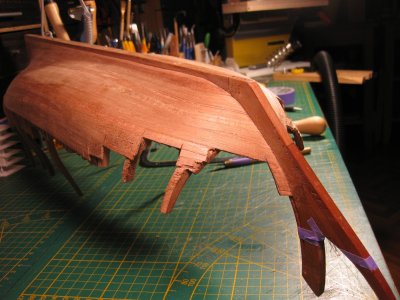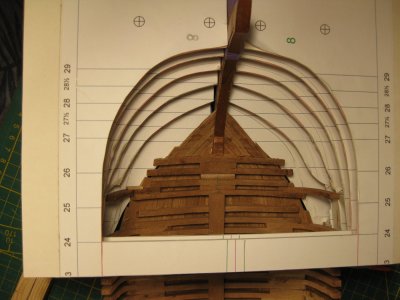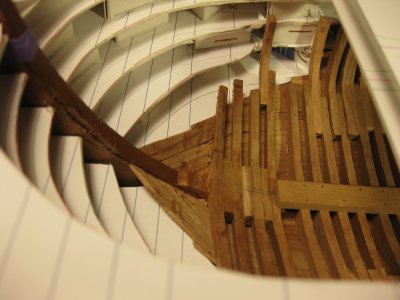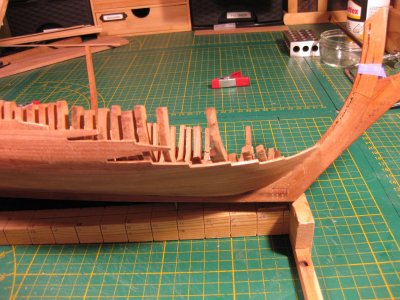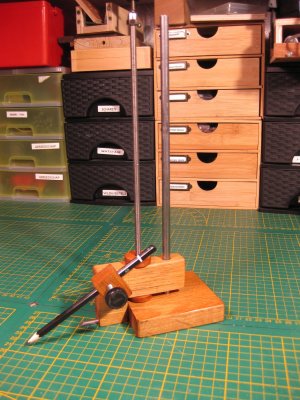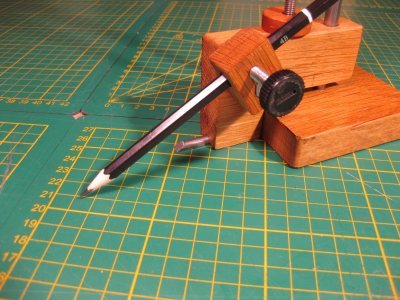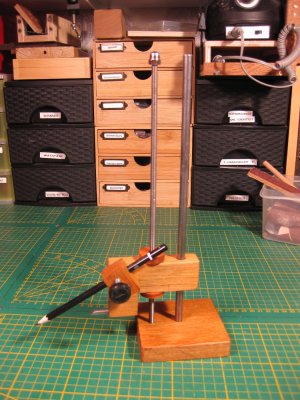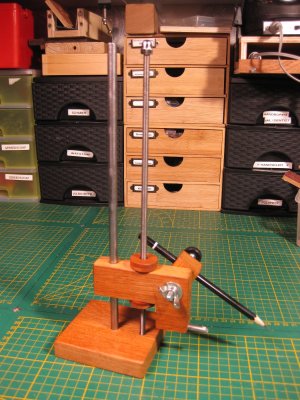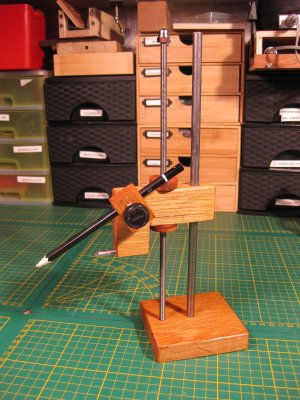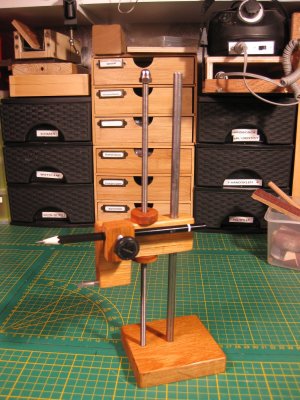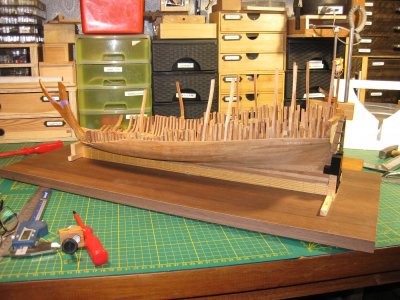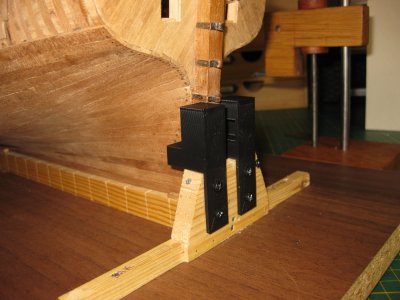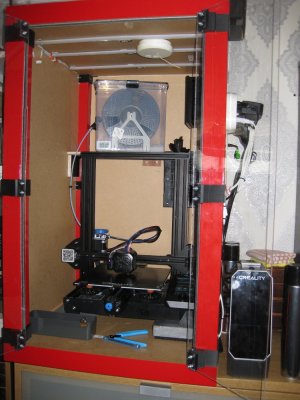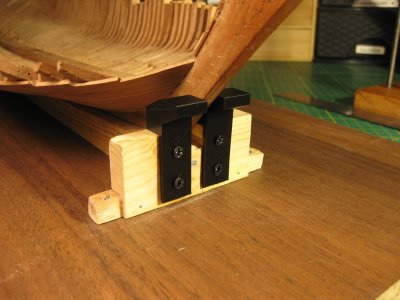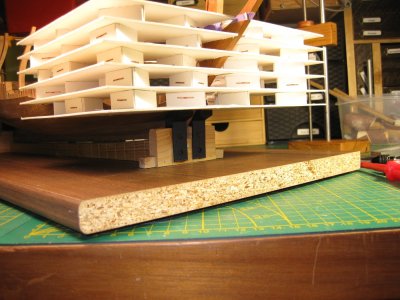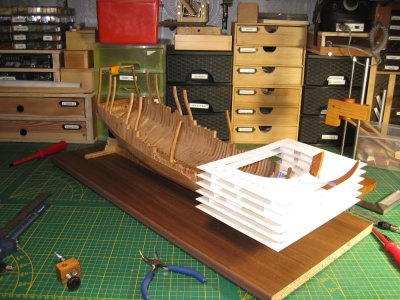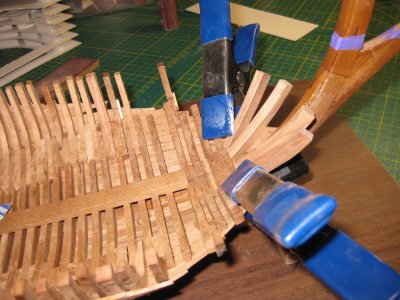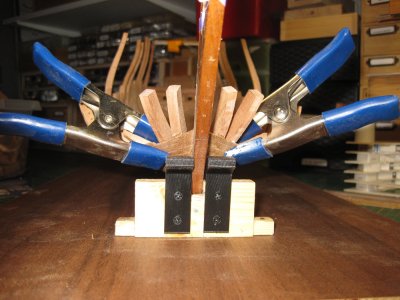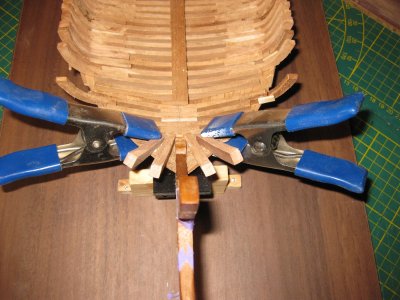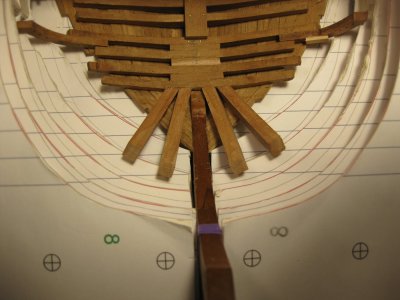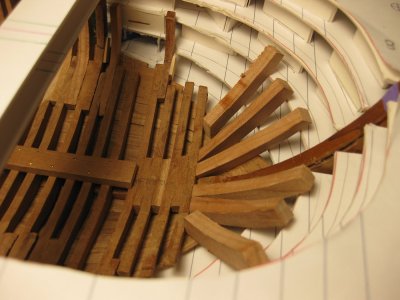- Joined
- Aug 8, 2019
- Messages
- 5,489
- Points
- 738

Thanks again for all the likes and visit to my post.
I mentioning it in Peter Voogt's log about the curves of the bow. Working with plans could be refreshing, making frames from plans is difficult, but you have a direction how everything goes.
The Bow.
It gives me a headache. Why?
It's not right. There was something bothering me all along about the shape of the boards placed. Especially the last 5 strakes were not right. I could see that the rounding was not right, the typical Dutch bow is hard to make. Especially if you work without padding behind the planks. The wood is going to determine its own shape. The tension in the wood creates straight planks.
I also see this in the keel, it has risen slightly in the middle (1 to 1.5 mm.). Not much but it shouldn't be more. But I have that confidence now because the belly is well filled and I just have to make sure that the remaining parts come on without tension.
But back to the bow, it bothered me that it was a little too tapered. Much better than on my first attempt/redo, then it looked more like a clipper than a Dutchman.
First I made a mould out of cardboard. (Paper/cardboard is actually quite easy to work with, so maybe I should try Ab Hoving's concept).
I used the original waterline drawing of the plans to print a part of it on paper and made it into a mold. Not to build 100% right to that, but more as an indication of where things go wrong.
I discovered that indeed my first feeling was right and that the last 5 strakes in the bow section were too straight. You can clearly see this in the photos. The top course that is on it is just 1/2 course below the waterline.
So we are going to demolish a small section to remake this. I will now make some meat on the inside first, though. In other words, first put some parts in the bow that will determine the course of the bow.
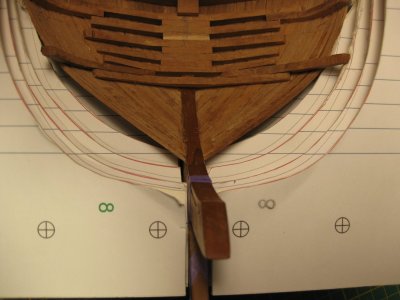


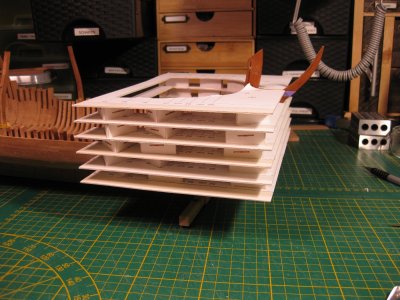

I am not going to follow the drawing exactly, because then I would have to rebuild the ship. I chose shell first and that has consequences. But the difference in the bow is too big and that affects the shape of a Dutch bow. So an indication and a small adjustment to make it rounder.
I mentioning it in Peter Voogt's log about the curves of the bow. Working with plans could be refreshing, making frames from plans is difficult, but you have a direction how everything goes.
The Bow.
It gives me a headache. Why?
It's not right. There was something bothering me all along about the shape of the boards placed. Especially the last 5 strakes were not right. I could see that the rounding was not right, the typical Dutch bow is hard to make. Especially if you work without padding behind the planks. The wood is going to determine its own shape. The tension in the wood creates straight planks.
I also see this in the keel, it has risen slightly in the middle (1 to 1.5 mm.). Not much but it shouldn't be more. But I have that confidence now because the belly is well filled and I just have to make sure that the remaining parts come on without tension.
But back to the bow, it bothered me that it was a little too tapered. Much better than on my first attempt/redo, then it looked more like a clipper than a Dutchman.
First I made a mould out of cardboard. (Paper/cardboard is actually quite easy to work with, so maybe I should try Ab Hoving's concept).
I used the original waterline drawing of the plans to print a part of it on paper and made it into a mold. Not to build 100% right to that, but more as an indication of where things go wrong.
I discovered that indeed my first feeling was right and that the last 5 strakes in the bow section were too straight. You can clearly see this in the photos. The top course that is on it is just 1/2 course below the waterline.
So we are going to demolish a small section to remake this. I will now make some meat on the inside first, though. In other words, first put some parts in the bow that will determine the course of the bow.





I am not going to follow the drawing exactly, because then I would have to rebuild the ship. I chose shell first and that has consequences. But the difference in the bow is too big and that affects the shape of a Dutch bow. So an indication and a small adjustment to make it rounder.
Last edited:





